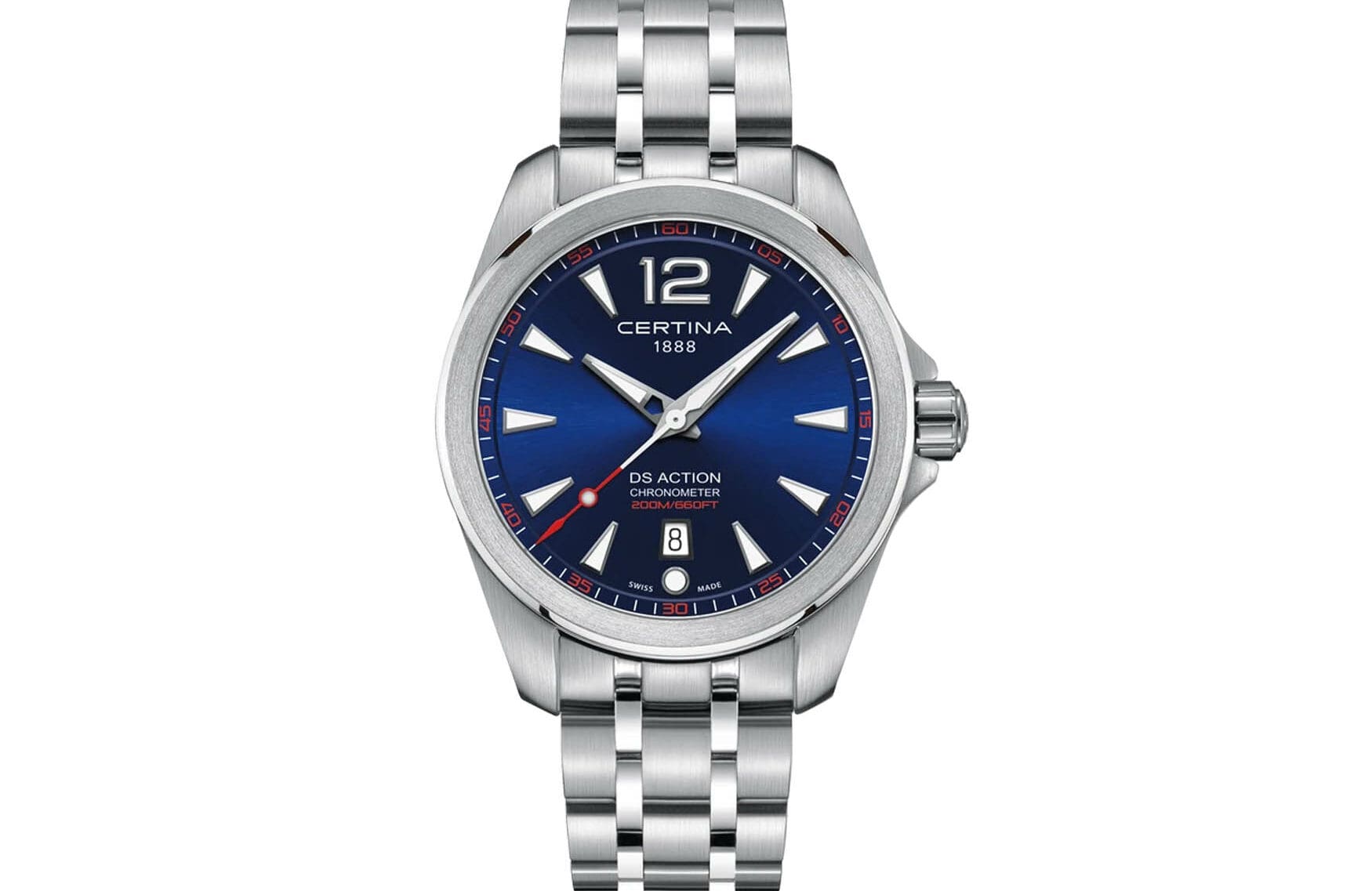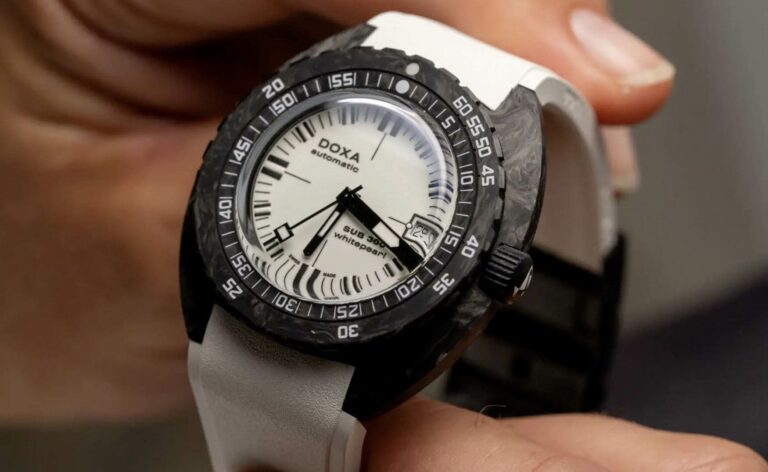Buffy Acacia
Every watch strives for precision; without it, the hands would just spin randomly. There is no watch that doesn’t try its best to keep time, but of course, not all watches do a very good job. That’s where COSC comes in, an organization founded on both science and trust to assure Swiss watch consumers of precision.

Chronometers have been around for hundreds of years, but it took about 200 years from when people realized they needed a chronometer until they actually built one. Essentially, to accurately calculate longitude at sea, a highly accurate clock was needed. Britain led the way in the 18th century By awarding prizes to watchmakers, and more than 100 years later, the first chronometry exams were held at the Royal Observatory in Greenwich in 1822. Over the years, Switzerland caught up and became a global watchmaking centre. The movements are smaller, more accurate, and easier to wear on the wrist.The 20th century saw advertising get out of hand, confusion abound, and the chronometer took center stage with countless observatory tests and fraudulent claims. Eventually, the local Swiss authorities issuing chronometer certificates were replaced by a more centralised organisation, the Contrôle Officiel Suisse des Chronomètres.


in spite of The ups and downs of the Swiss watch industry leading up to the quartz crisisIn the 1970s, as Switzerland struggled to keep up with the price and reliability of quartz watches, COSC was founded in 1973. It established a set of published tests and standards to reaffirm confidence in Swiss watches, and also played a role in the survival of some businesses. In the years prior to 1973, chronometers had to be adjusted in several positions and at different temperatures, and were required to be accurate to -1/+10 seconds per day in five positions. Notice how vague this description was, and that the certificate was issued for the entire movement, not for each movement individually. COSC quickly rectified this by issuing a certificate for each movement, tested for a total of 15 days in five positions and at three temperatures (8°, 23°, and 38°C). The accuracy goal was also changed, aiming for -4/+6 seconds per day.

Many people describe their watch as running “within COSC standards” if the measured daily rate is within the range of -4 to +6, but this somewhat underestimates the rigor of COSC testing. Outlined by the international standard ISO 3159, the requirements that a mechanical watch movement must achieve to be COSC certified are as follows:
1. Average daily rate: -4/+6 seconds
This is the test that everyone considers the most important, since it is the test you experience with your watch every day when you wear it. Over the 10 days of testing, the daily rates are added up and divided by 10 to get an average. If the number is within the -4/+6 criteria, it passes the first test.
2. Average speed fluctuation – 2 seconds
A caliber is tested in five positions each day over a 10-day accuracy test, giving a total rating of 50. If you calculate the difference between all these numbers, the average will be within 2 seconds of each other. This ensures some consistency throughout. If a watch keeps accurate time for most of its life, but runs ridiculously fast when held at a certain angle, it is not an easy watch to adjust or repair.
3. The most volatile rate – 5 seconds
Simply put, this is the difference between the slowest and fastest speeds recorded during testing of the movement. A watch that runs at -3 seconds in one scenario and +5 seconds in another may technically be running within the COSC daily rate, but the difference is too large to be acceptable. As you can see from all these metrics, consistency is almost always more important than daily rate accuracy.
4. Difference in speed between horizontal and vertical positions -6/+8 seconds
This test is difficult to quantify because there are so many factors that affect readings in extreme conditions, but that’s what chronometer testing is for. The average of the vertical speed on days 1 and 2 of testing is subtracted from the average in the horizontal position on days 9 and 10. This is usually where the biggest differences occur, not only because gravity has an opposite effect on the balance spring in horizontal and vertical positions, but also because the movement has gone through many tests and temperature cycles between readings.
5. Maximum rate fluctuation – 10 seconds
Many of these tests sound pretty similar, don’t they? This shows just how hard COSC tries to make sure there are no leaks. As opposed to the maximum variation in the rate, the maximum variation is the measurement between the average daily rate (measured in the first step) and any one of the 50 total measurements.
6. Thermal Fluctuation – ±0.6 seconds
The clock must maintain its accuracy through the gradual change of seasons, as well as sudden shocks, such as entering a heated building on a snowy day. Here, the most stringent measurements are imposed, with a maximum permissible error of +/- 0.6 seconds per degree Celsius, calculated by taking the average of temperatures measured at 8 degrees and 38 degrees divided by 30.
7. Rate restart — ±5 seconds
Average the daily deviation from the first two days of testing and subtract it from the daily deviation from the final day. Is it off by more than 5 seconds in either direction? If it is off, unfortunately the movement stumbled at the last hurdle and the testing proved too harsh. If it is not off, congratulations! COSC certification is complete and the movement can be sent back to the manufacturer, cased and sold.

Now, there is one thing that needs to be mentioned about COSC certification: it costs money, and a lot of money. That is why Rolex, Tudor, Omega, etc. are their biggest customers: they can afford it, and COSC is often a stepping stone to more advanced chronometer certifications like METAS. Smaller brands, even if they use the exact same movement, may not be able to afford it while still keeping the price attractive to buyers. COSC-certified chronometers make up about 5% of the annual Swiss watch production, and 95% of them are untested. This does not necessarily mean that COSC chronometers are in the top 5% of accuracy, and it is entirely possible for manufacturers to do their own testing and exceed the COSC standard. But considering that the organization has been around for over 50 years, there is a lot of confidence in the process, and it may be worth paying the premium.

So far, everything we’ve covered has been about mechanical watches with spring balances. We all know that quartz watches are almost more accurate than mechanical chronometers by default, but what about the COSC standard for quartz? It certainly offers quartz chronometer certification, and it’s good to see how high the standards are. The average daily deviation is only ±0.07 seconds at 23°C, and ±0.20 seconds at 8°C and 38°C. It also measures the temporary and permanent effects of shocks and drops, but only to an error of ±0.05 seconds. The test involves 200 shocks of a force equivalent to 100 G, which is 200 shocks strong enough to knock a person unconscious. Quartz watches are often not very water-resistant, so they are also tested for performance in a range of humidity, and allow for a temporary deviation of ±0.10 seconds. Unfortunately, now that the reliability of quartz has been proven beyond doubt, the demand for chronometer-certified quartz watches is not as high as it once was. Still, only about 0.2% of Swiss quartz watches pass COSC.

You may wonder how COSC can measure a movement’s performance so accurately. It’s because they compare it to two independent atomic clocks synchronized to GMT/UTC time. The results are recorded for every movement, but it’s up to the manufacturer whether the watch comes with a certificate. For example, all Breitling watches come with a COSC certificate, while other brands, such as Omega, require a request to get a certificate. While the report is certainly nice to have, knowing that it passed and experiencing your average speed while wearing the watch is enough for most people.
Another thing to remember is that COSC certification is only done at the beginning of the movement’s life. It is not a lifetime guarantee, just the knowledge that it was once able to pass those tests. Generally, COSC movements, like all mechanical watches, will gradually lose accuracy over time. With proper maintenance at appropriate intervals, they can be brought back to COSC standards. They can also be improved by having a watchmaker personally adjust them. In fact, your local watchmaker may even be able to adjust a non-COSC watch to an excellent level of accuracy. So, do you need COSC? That depends on how you feel about seeing the word “Chronometer” on the dial of your watch.
